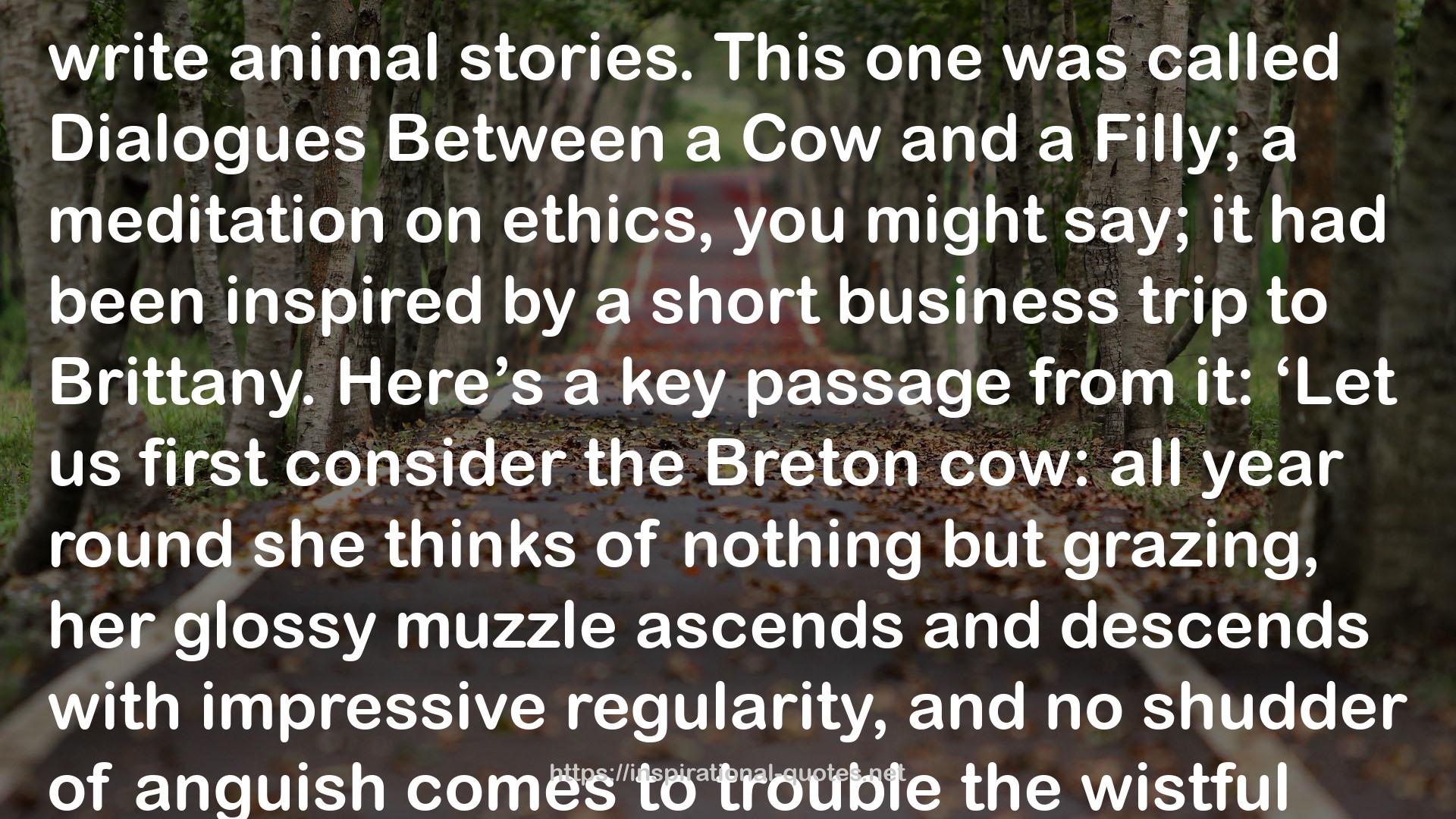" write animal stories. This one was called Dialogues Between a Cow and a Filly; a meditation on ethics, you might say; it had been inspired by a short business trip to Brittany. Here’s a key passage from it: ‘Let us first consider the Breton cow: all year round she thinks of nothing but grazing, her glossy muzzle ascends and descends with impressive regularity, and no shudder of anguish comes to trouble the wistful gaze of her light-brown eyes. All that is as it ought to be, and even appears to indicate a profound existential oneness, a decidedly enviable identity between her being-in-the-world and her being-in-itself. Alas, in this instance the philosopher is found wanting, and his conclusions, while based on a correct and profound intuition, will be rendered invalid if he has not previously taken the trouble of gathering documentary evidence from the naturalist. In fact the Breton cow’s nature is duplicitous. At certain times of the year (precisely determined by the inexorable functioning of genetic programming) an astonishing revolution takes place in her being. Her mooing becomes more strident, prolonged, its very harmonic texture modified to the point of recalling at times, and astonishingly so, certain groans which escape the sons of men. Her movements become more rapid, more nervous, from time to time she breaks into a trot. It is not simply her muzzle, though it seems, in its glossy regularity, conceived for reflecting the abiding presence of a mineral passivity, which contracts and twitches under the painful effect of an assuredly powerful desire. ‘The key to the riddle is extremely simple, and it is that what the Breton cow desires (thus demonstrating, and she must be given credit here, her life’s one desire) is, as the breeders say in their cynical parlance, “to get stuffed”. And stuff her they do, more or less directly; the artificial insemination syringe can in effect, whatever the cost in certain emotional complications, take the place of the bull’s penis in performing this function. In both cases the cow calms down and returns to her original state of earnest meditation, except that a few months later she will give birth to an adorable little calf. Which, let it be said in passing, means profit for the breeder.’ * The breeder, of course, symbolized God. Moved by an irrational sympathy for the filly, he promised her, starting from the next chapter, the everlasting delight of numerous stallions, while the cow, guilty of the sin of pride, was to be gradually condemned to the dismal pleasures of artificial fertilization. The pathetic mooing of the ruminant would prove incapable of swaying the judgment of the Great Architect. A delegation of sheep, formed in solidarity, had no better luck. The God presented in this short story was not, one observes, a merciful God. "
― Michel Houellebecq , Whatever
